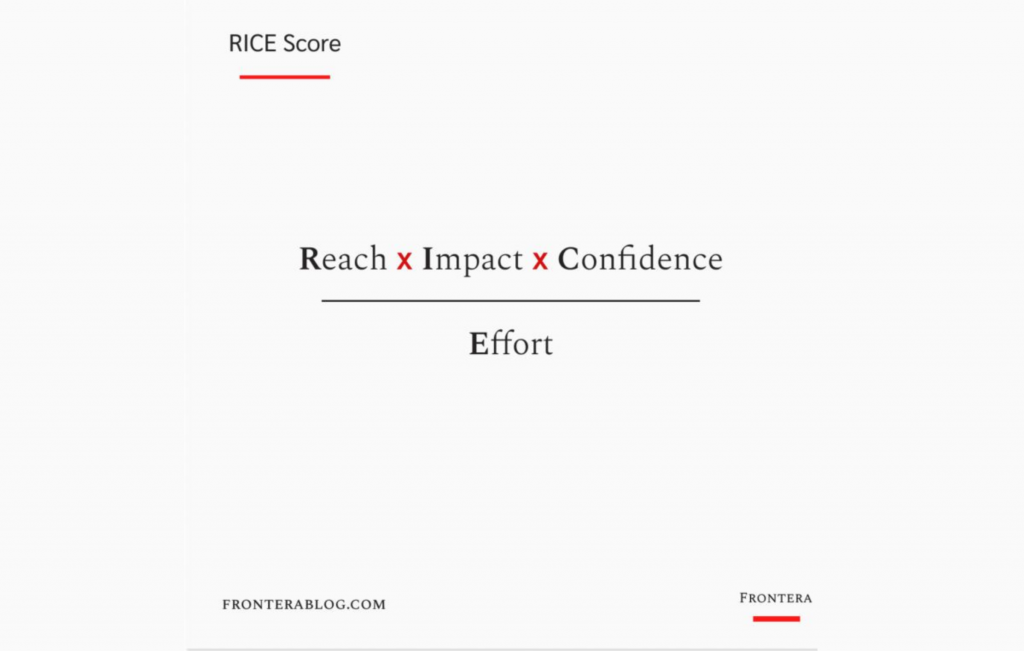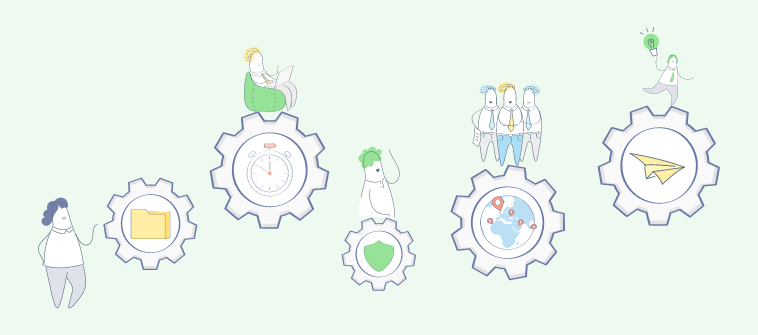Imagine you have ten different tasks to complete by the end of the week. And each of them feels equally important. So, what do you do?
Well, if you had asked me the same question some years ago, my answer would have been:
I’ll do the small ones first, followed by the big ones. Pretty simple, huh!
But trust me, this approach had only left me hanging in the middle with no clue about meeting deadlines and finishing piles of tasks – a complete disaster! It was after that I started learning how to prioritize tasks, some unique techniques (which I never heard before), and the importance of doing so.
In this blog, that’s exactly what I will discuss with you, hoping to help you manage tasks better than before.
What Is Task Prioritization?
“Nothing is more difficult, and therefore more precious, than to be able to decide.” – Napoleon Bonaparte.
Indeed, it’s a tough call to make when it comes to prioritizing tasks. And that brings us to the question – what is task prioritization?
Simply put, it refers to the practice of organizing and ranking tasks based on their relative importance and urgency. It involves determining which are the most critical or time-sensitive tasks so that they can be finished first while also considering deadlines, resources, and dependencies.
Of the many different things, a task management tool is a must-have for task prioritization. There, you can set deadlines, add team members, collaborate, and complete tasks.
Suggested Read: Top 10 Task Management Software in 2024
5 Proven Task Prioritization Techniques
Now that you have a general idea of task prioritization let’s look at some of the most effective techniques that can help you do it better.
1. The Eisenhower Matrix
The “Eisenhower Matrix,” also known as the Urgent-Important Matrix, is a timeless framework that helps you prioritize tasks by evaluating their urgency and importance.
The method was attributed to Dwight D. Eisenhower, the 34th President of the United States and a five-star general during World War II.
It leverages a simple yet powerful principle for organizing tasks through the following four quadrants –
- Quadrant 1: Urgent and important
- Quadrant 2: Important but not urgent
- Quadrant 3: Urgent but not important
- Quadrant 4: Neither urgent nor important
To prioritize tasks based on the principles of this matrix, you need to simply list down all tasks and then sort your day’s work based on their importance. A general rule is –
Quadrant 1 > Quadrant 2 > Quadrant 3 > Quadrant 4
Getting confused? Let me give you a relevant real-life example so that you can visualize how you should use it.
For example, suppose you have four tasks to prioritize:
Task A: Prepare a presentation for a client meeting tomorrow.
- Urgency: High
- Importance: High
- Quadrant: 1
Task B: Prepare the newsletter for this month.
- Urgency: Low
- Importance: High
- Quadrant: 2
Task C: Reply to an email from a colleague asking for your feedback on an article.
- Urgency: High
- Importance: Low
- Quadrant: 3
Task D: Watch a video on YouTube about the latest trends in your industry.
- Urgency: Low
- Importance: Low
- Quadrant: 4
Based on the Eisenhower Matrix, you should prioritize Task A, then Task B, then Task C, then Task D. While this may change in some cases based on other factors, the general rule of thumb stays the same.
Based on the Eisenhower Matrix, you should prioritize Task A, then Task B, then Task C, then Task D. While this may change in some cases based on other factors, the general rule of thumb stays the same.
2.The ABCDE Method
Every minute you spend in planning saves 10 minutes in execution; this gives you a 1,000 percent Return on Energy! – Brian Tracy on X (Twitter).
Brian Tracy is the mastermind behind the famous “ABCDE Method” – a testament to the power of simplicity in prioritization and time management. He is a renowned productivity expert.
His method provides a straightforward approach to managing tasks based on their significance and urgency. To use this technique, you need to assign a letter to each task, from A to E, according to the following rules:
A: Tasks of Paramount Importance
These are non-negotiable tasks, often related to major goals and objectives. You should do these tasks first and without delay.
Example: Preparing a client presentation due the next day or finalizing a project’s budget.
B: Important Tasks
These are somewhat important and have less severe consequences if not done. They are often prerequisites for A tasks or activities that contribute to long-term goals.
Example: Scheduling a meeting for next week’s project discussion or reviewing a document.
C: Nice-to-Do Tasks
Tasks in the ‘C’ category are nice to do but not essential. Consider doing these tasks after A and B, only if you have spare time.
Example: Organizing your workspace or attending an optional team-building event.
D: Delegable Tasks
These are the tasks that can be delegated or outsourced to someone else who can do them better or faster. They are often related to non-core or routine activities.
Example: Administrative work or routine reports that a team member can compile.
E: Least-Important Tasks
These are the tasks that can be eliminated or avoided without any negative impact. Ensure these tasks don’t come in the way of the other ones above.
Example: Unnecessary meetings or checking social media during work hours.
The RICE Method
“RICE” stands for Reach, Impact, Confidence, and Effort. It is a technique that helps you prioritize tasks based on their potential value and cost.
This method is particularly useful in environments where resources are limited, and decisions must be made to allocate those resources efficiently.
Here’s a closer look at each component of the RICE method and how to apply it effectively –
REACH
How many people will be affected by this task?
This dimension assesses how many people or transactions a task or project will impact within a certain timeframe (usually a month). Reach is about quantifying the breadth of a task’s influence, helping prioritize efforts that affect a larger audience or a significant aspect of the business.
You can use a number, such as 100, or a percentage, such as 10%, to measure your reach.
For example, if a marketing campaign is expected to engage 100 users in a month, its reach score would be 100.
IMPACT
How much will this task benefit or harm the people affected by it?
Impact measures the degree to which a task or project will contribute to your key goals. It is usually assessed on a qualitative scale (e.g., massive, high, medium, low), which is then converted and rated on a scale (such as 0.25, 0.5, 1, 2, or 3) – with higher numbers indicating greater impact.
CONFIDENCE
How confident are you about the task’s expected reach and impact?
Confidence reflects how certain you are about your estimates of Reach and Impact. It’s typically expressed as a percentage (70%, 80%, 90%, etc.), reflecting how sure you are about the outcomes of your efforts.
EFFORT
How much time, money, or resources will this task require?
Effort estimates the total amount of work required to complete the task or project, typically measured in person-months or another unit of time. You can measure your effort using a number, such as 10 hours, or a scale, such as 3 for high, 2 for medium, and 1 for low.
Example: If a task requires three person-months of work, this figure would be used to calculate its Effort score.
Once you have estimated these factors, you can calculate the RICE score for each task by multiplying the reach, impact, and confidence and dividing by the effort. The higher the score, the higher the priority.
Calculating the RICE Score
The RICE score is calculated by multiplying Reach, Impact, and Confidence and then dividing it by Effort. The formula looks like this:

For example, suppose you have three tasks to prioritize:
Task A: Launch a new feature for your app that will increase user retention by 10%.
- Reach: 1000 users
- Impact: 2
- Confidence: 90%
- Effort: 20 hours
- RICE score: (1000 x 2 x 0.9) / 20 = 90
Task B: Update the design of your app to make it more appealing.
- Reach: 2000 users
- Impact: 0.5
- Confidence: 50%
- Effort: 30 hours
- RICE score: (2000 x 0.5 x 0.5) / 30 = 16.67
Task C: Fix a bug that causes your app to crash occasionally.
- Reach: 500 users
- Impact: 1
- Confidence: 80%
- Effort: 10 hours
- RICE score: (500 x 1 x 0.8) / 10 = 40
Based on the RICE scores, you should prioritize – Task A > Task C > Task C.
MoSCoW Prioritization
If you are working on a project with limited resources and strict deadlines, this technique can be highly effective.
“MoSCoW Prioritization,” also known as MoSCoW Analysis or MoSCoW Method, helps you prioritize your tasks based on their necessity and desirability.
The MoSCoW prioritization method is pretty identical to the ABCDE method. But, to help you understand it better, I’ll give you some examples –
For example, suppose you have six tasks to prioritize for a website development project:
- Create a homepage with a clear and catchy headline.
a. Necessity: Must have
b. Group: M
2. Include a testimonial section with customer reviews and ratings.
a. Necessity: Should have
b. Group: S
3. Integrate a payment gateway to accept online transactions.
a. Necessity: Could have
b. Group: C
4. Add a contact form with a captcha to prevent spam.
a. Necessity: Could have
b. Group: C
5. Design a logo and a favicon for the website.
a. Necessity: Won’t have
b. Group: W
6. Implement a live chat feature to provide instant support.
a. Necessity: Won’t have
b. Group: W
Putting the MoSCoW technique into action, here’s how you should summarize the tasks –
Task 1 > Task 4 > Task 2 > Task 6 > Task 3 > Task 5
Value Versus Complexity/Effort Matrix
In certain scenarios, you might need to consider both the value, its complexity, or the effort to prioritize tasks in project management. This is where the “Value versus Complexity” or the “Effort Matrix” comes into play.
High Value, Low Complexity (Easy Wins): Tasks or features in this quadrant are highly desirable because they provide significant value with relatively little effort or complexity. These are the “low-hanging fruit” or “easy wins” that you should prioritize to achieve immediate impact.
Example: Implementing an automated email response system to improve customer service efficiency.
High Value, High Complexity (Major Projects): These tasks offer substantial value but require significant resources, time, or complexity to implement. Major projects need careful planning and need to be broken down into smaller tasks to manage the complexity.
Example: Developing a new product line or entering a new market.
Low Value, Low Complexity (Fill-Ins): Tasks in this quadrant are easy to achieve but offer limited value. They are not a priority but can be tackled in between major tasks or when resources are available.
Example: Updating a website’s FAQ section.
Low Value, High Complexity (No Worth): These tasks require a lot of effort for little return and should generally be avoided. If they are necessary for some reason, consider ways to reduce their complexity.
Example: Overhauling an internal reporting system that few use.
Key Benefits of Task Management
Now that you know quite a bit about how to prioritize tasks, you might be wondering next – why is this even important? What are its benefits?
Well, based on my personal experience, I listed down some of the top benefits that you are likely to see after prioritizing tasks.
Boosted Productivity: By tackling high-priority tasks first, you make progress towards goals and contribute to overall productivity. Prioritization helps allocate limited resources effectively, ensuring you’re achieving the most important outcomes.
No More Missed Deadlines: Knowing what matters most means you can plan work effectively. Allocating hours based on task complexity, ensuring you never underestimate how long things will take, helps you never miss a deadline.
Effective Time Management: When tasks are poorly prioritized, time is wasted on less critical activities, leading to a lack of progress on important projects. Prioritization helps you make better use of your time and stay on track.
Reduced Stress: Ever feel like there’s never enough time? Prioritization helps you focus on the tasks that matter most, reducing the burden of endless ‘to-dos’ and bringing calmness to your schedule.
Suggested Read: 15 Hard-to-Ignore Project Management Benefits
How to Choose a Task Prioritization Technique
There is no definitive answer to this question, as different task prioritization techniques may suit different situations, projects, and goals. However, there are some factors you can consider when choosing the right technique for your company –
Nature & Scope of Tasks
Depending on the type, size, and complexity of your tasks, you may need a technique that is more or less detailed, quantitative, or qualitative.
For example, if your tasks are simple and short-term, you may prefer a technique that is easy and fast. The ABCDE Method or the Eisenhower Matrix should work fine.
For complex tasks, consider data-driven techniques, such as RICE.
Prioritization Goals
Understanding your company’s specific goals is crucial when selecting a prioritization technique. Consider factors such as the nature of your work, industry, team size, project complexity, and customer requirements. Identify the key criteria that are important for your organization, such as time, cost, quality, customer satisfaction, or risk management.
Consider Team/Stakeholder Feedback
Involve your team in the decision-making process. Seek their feedback on different techniques they may have used or prefer. Consider the skills and capabilities of your team members, as some techniques may require certain expertise or resources.
Learning Curve & Adoption Effort
If a technique is too complex or time-consuming to adopt, it may not be the right fit for your company. Choose a technique that is practical and can be easily incorporated into your existing workflow.
Test & Iterate
Experiment with different techniques to find what works best for your company. Start with a pilot project or a small team to test the effectiveness of a technique. Monitor its impact on productivity, team collaboration, and overall project outcomes.
Remember that the needs and dynamics of your company may evolve over time, so be open to revising or adopting new techniques as necessary.
Set up Task Priority With ProProfs Project
Knowing how to prioritize tasks is no optional skill but one that helps you achieve more with less stress. Sounds vague? Well, by prioritizing tasks using the right technique and the right steps, you can deliver value to customers and stakeholders.
To start with, I’d suggest you try a professional project management platform like ProProfs Project.
It’s an easy-to-use tool that can help you create and manage your task list and visualize priorities on a dashboard or a calendar. You can also track your progress and performance, and collaborate with the necessary parties.
The best thing, according to me? It goes easy on your pockets, and the learning curve isn’t something that will overwhelm you. Regardless, I’d still suggest you start your free trial or test a free plan before buying any such software solution for task prioritization.
Do you want a free Project Management Software?
We have the #1 Online Project Management Software for effective project management.





